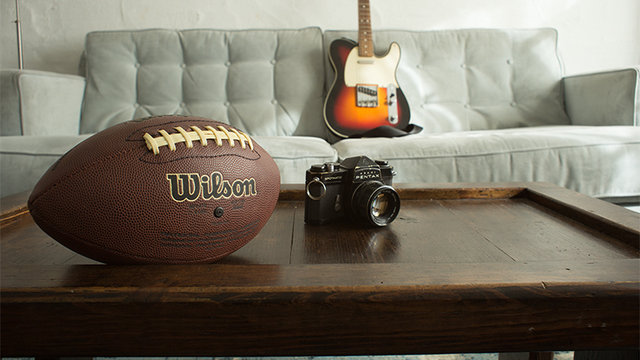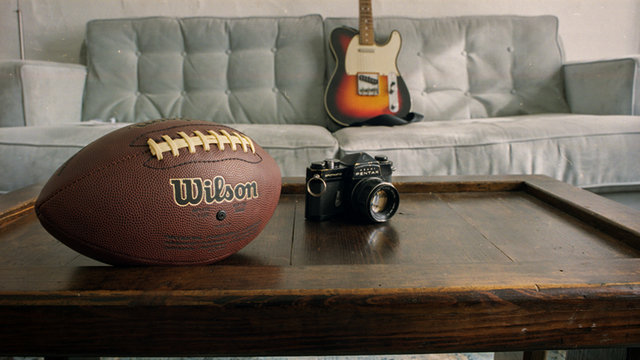
Stuart Brereton
Basic Member-
Posts
3,955 -
Joined
-
Last visited
Everything posted by Stuart Brereton
-
Lighting a Day Car Exterior in the Desert
Stuart Brereton replied to Jacob Mitchell's topic in Lighting for Film & Video
If shooting dialogue, I always try to keep cars backlit, whether they are moving or not, and then fill with a large bounce (if they are not moving). Backlit meaning downstage from camera, rather than the actual back of the car. If you're shooting wider shots of the entire car then use whatever angle gets you the best reflections. -
A movie that is challenging because it presents complex ideas and concepts is fine by me, but a movie that is incomprehensible because it doesn't adequately explain those concepts and ideas is a failure.
-
Or maybe the filmmakers were just trying so hard to be clever that they forgot to be comprehensible. If you don't intend for your audience to understand the dialogue, why write it in the first place? Opinions will obviously vary, but personally, I don't want to have to watch a film seven times before I understand it.
-
So underexposure is the thing now, hey
Stuart Brereton replied to Karim D. Ghantous's topic in General Discussion
Gordon Willis was an extraordinarily precise DP who used under exposure as a tool, not as a crutch. Worlds apart from the kind of work we’re discussing. -
So underexposure is the thing now, hey
Stuart Brereton replied to Karim D. Ghantous's topic in General Discussion
If I wanted to be uncharitable, I'd say it's because they don't know how to light, so they use underexposure as a crutch. If enough people do it, it becomes a look in its own right, and its origins as a failure of technique get forgotten. -
Recommendations for medium format film SLR
Stuart Brereton replied to Patrick Cooper's topic in Off Topic
Hasselblads are not cheap. A 500c with a film back and an 80mm lens can easily cost well over $1000 -
So underexposure is the thing now, hey
Stuart Brereton replied to Karim D. Ghantous's topic in General Discussion
I agree. As cameras have become more and more sensitive, there has been an increasing tendency to not light, and to let practical lamps do the majority of the work. This can sometimes make things look flat because practicals are not as controllable, and so a lot of DPs resort to underexposure as a way of creating mood where there is little contrast. -
Convert Contax Zeiss C/Y to Anamorphic PL?
Stuart Brereton replied to sines's topic in Lenses & Lens Accessories
I doubt that Joe Dunton would rehouse lenses. He was semi retired last time I saw him, and that was several years ago. As Dom says, the expense involved in prototyping and building a one off lens package would likely be more than just going out and buying a set of Atlas Orions or similar.- 15 replies
-
- anamorphic
- pl
-
(and 4 more)
Tagged with:
-
Question for the Experts - Tonal Reproduction
Stuart Brereton replied to William Loekken's topic in General Discussion
Print stock has a dynamic range of about 7-8 stops, I believe, although my info might be a little out of date. -
Shooting PAL 50i and finishing in NTSC 24p
Stuart Brereton replied to Mike Krumlauf's topic in General Discussion
As far as I remember, the PD150 was interlaced only. XL1, of course, was progressive. Back in the days when I used to shoot low budget music videos in the UK, we occasionally used both cameras , and any standards conversion to NTSC was done by simply dropping the clip onto a 23.98 timeline in FCP7 and letting the software figure it out. -
Operating Whip Pans or Quick Landing Shots
Stuart Brereton replied to Nelson JJ Flores's topic in Camera Operating & Gear
With a bit of practice, this is probably the only practical way of doing a whip pan on a geared head, but I wouldn't want to have to do it repeatedly throughout a scene. -
Kodak Double X B&W stock, which is probably the most widely available B&W stock, is an old stock. It has been in existence for many years, and has not been updated with the same frequency that the color stocks have. Consequently, it's not going to have the same fine grain and wide latitude as Vision 3 film, so there will be noticeable differences between Double X and desaturated Vision 3. That said, shooting with color, and then desaturating does give you flexibility in being able to channel mix the RGB to fine tune the exact B&W look you want, as well as being able to change your mind later.
-
You might say that sunstars and internal reflections are more desirable, and veiling flare is less desirable, but I can think of reasons why both might be useful. Many DPs (Roger Deakins, for instance) hate lens flares of any type, whereas other people actively seek them out (anamorphic streaks, for instance). Ultimately, it's down to personal taste, and the needs of whatever effects you are trying to achieve.
-
Can you name this light?
Stuart Brereton replied to Toto Vivian's topic in Lighting for Film & Video
That's a tungsten fresnel of the type you usually find in theaters. Probably a Rank Strand of some sort. I think Minims were 300w, but I haven't done any theater lighting since school, so I could be wrong. Edit: It looks like a Rank Strand model 803 -
Looking for PL Apochromatic prime sets
Stuart Brereton replied to Stephen Sanchez's topic in Lenses & Lens Accessories
Hmm. I could have sworn it was an Otus, but we had a mixed set of lenses, so it could have been a Milvus. Whichever it was, I believe it's the same glass that is in the CP-2s, and I'm told they share the same problem. If it was a Milvus, you can safely ignore my original post... ? -
Looking for PL Apochromatic prime sets
Stuart Brereton replied to Stephen Sanchez's topic in Lenses & Lens Accessories
I had the misfortune to have to shoot a low budget show with Zeiss Otus lenses. They were all bad, but the 35mm, in particular, had the worst CA of any lens I have ever used. -
All films have a ‘bit of DI work’ (using the term loosely) and credit a colorist. That signifies nothing more than crediting an editor would.
-
Recommendations for medium format film SLR
Stuart Brereton replied to Patrick Cooper's topic in Off Topic
I wouldn’t have said that prices for the RB67 are insanely high. Compared to the Pentax 67 it’s pretty reasonable. However, I also wouldn’t describe it as an SLR. It’s a big, heavy chunk of metal. With a prism finder, you can use it handheld like an SLR, but honestly, it’s a better experience with the waist level finder and a tripod. I don’t know if Mamiya made a wider lens for it than the 50mm. I tend to use the 65mm more often anyway. If you decide to buy one, try to find one with the 6x8 rotating back, so you can use the 6x8 film backs. I bought mine like that without realizing. -
How to Light Moonlight motivated Interiors
Stuart Brereton replied to Haroon Saqib's topic in Lighting for Film & Video
Thank you both! -
shooting in cars with full frame
Stuart Brereton replied to Ofri Margalit's topic in General Discussion
Here are some frames I shot a couple of years ago when this same question came up on a different forum. First one was shot on an s35 sized sensor at 18mm, second on FF at 28mm, third on 6x7 medium format film at 50mm. The camera did not move between shots. DoF was matched as close as possible. The frames are near identical, although there is a slight difference in perspective in the third frame as the lens height on the MF camera was different. -
Director’s viewfinder, need advice
Stuart Brereton replied to Andreas Haglund's topic in General Discussion
Cadrage does 1.37:1. Artemis has 1.33:1 -
Director’s viewfinder, need advice
Stuart Brereton replied to Andreas Haglund's topic in General Discussion
I have one of those little ‘zoomfinders’. It has a range of different aspect ratios, but I wouldn’t describe them as being particularly accurate. For a start, they use an adjustable hard mask to change the AR, which is, of course, very out of focus when you look through it. They are an approximation at best. I think you’d see very little difference between 2.20:1 and 2.40:1 -
shooting in cars with full frame
Stuart Brereton replied to Ofri Margalit's topic in General Discussion
Any lens with an extreme wide angle field of view will exhibit distortion, unless it is rectilinear in design, regardless of the format you are shooting. There's really no difference between shooting FF with a 28mm and s35 with an 18mm in terms of distortion, assuming both lenses are of similar design. I don't know whether you plan to be shooting only from inside the car, or if you will be using door and hood mounts, but I would say that inside, you would probably be using focal lengths in the 18-28mm range on a s35 sensor, and perhaps longer if shooting from outside. This is not particularly wide, and any 'bending' of lines should be minimal. -
shooting in cars with full frame
Stuart Brereton replied to Ofri Margalit's topic in General Discussion
Is there a reason why you can’t just use wider lenses? -
Recreate Headlights flooding through blinds
Stuart Brereton replied to Lorenzo Vice's topic in Lighting for Film & Video
Swing a tungsten fresnel (or par) across the windows? Or two, if you prefer.






